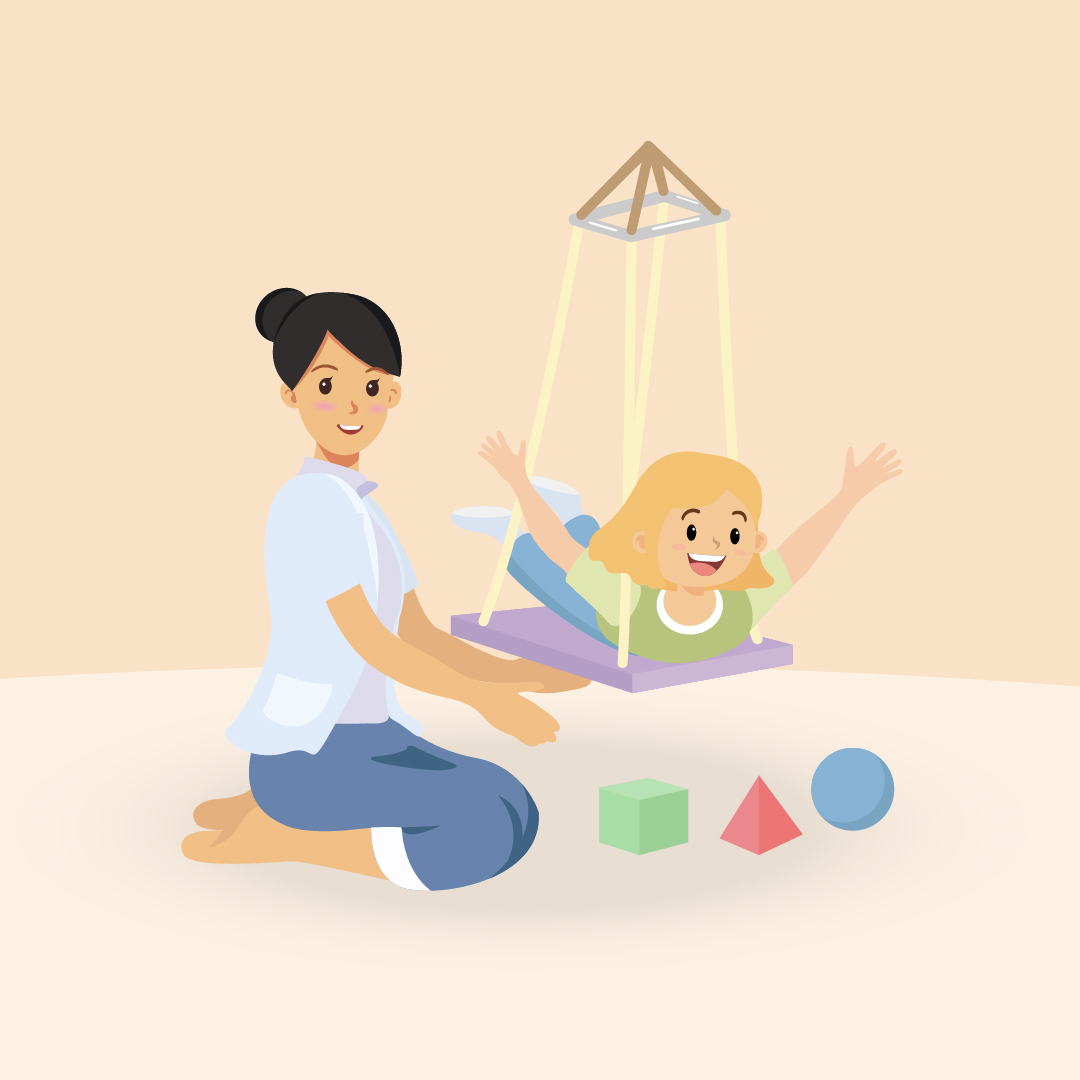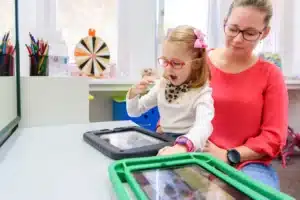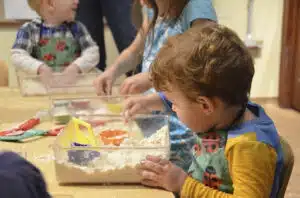In honor of April being both Occupational Therapy and Autism Awareness and Acceptance Month we would like to highlight the importance of occupational therapy for autistic children. Autism is a lifelong developmental disability, and the Autism experience is different for everyone. The core characteristics look different from child to child and include differences in communication, socialization, and interests and routines. Occupational therapists are particularly skilled in providing interventions to autistic individuals. Through the use of evidence-based strategies, occupational therapists address self-regulation and sensory needs, physical and motor development, self-care skills, cognitive and play skills, social participation, and daily life skills.
In 2023, the CDC reported that approximately 1 in 36 children in the U.S. is diagnosed with Autism Spectrum Disorder (ASD), according to 2020 data. Early diagnosis is important to lead to early intervention, which provides families with the skills, time, and opportunity to support development in areas that may be identified as delayed or different. Occupational therapists play a key role in early detection of autism by discussing typical developmental milestones, promoting engagement in age-appropriate activities, and providing community resources that support participation. In addition to providing direct services in-home, in clinic, or in schools, occupational therapists consult and collaborate with others such as family members, educators, other therapists, and health team members. Occupational therapists also advocate for community inclusion as all children with disabilities have a right to live, learn, play, and work alongside their peers.
An occupational therapist will begin by evaluating the individual. The evaluation includes gathering background information on birth, medical, and developmental history, in addition to current levels of performance. The areas evaluated include sensory, motor, cognitive, and social skills through standardized assessments, questionnaires, and observations. The results of the evaluation contribute to the development of a personalized intervention plan and goals to target, which is done in collaboration with the family. Based on the evaluation, the occupational therapy practitioner will recommend the duration and frequency of services.
Through interventions, occupational therapists can help autistic individuals build on their areas of strength and overcome their limitations. These interventions include:
- Incorporating sensory integration and sensory-based strategies
- Promoting self-care skills and routines to help with daily activities such as bathing, grooming, feeding, and dressing for increased independence
- Working on motor development and motor planning skill development
- Supporting mental health and wellness
- Emphasizing social skill development and self-regulation strategies
- Fostering cognitive and play skill development
- Providing recommendations on environmental modifications
- Advising on strategies including, visual supports or technology recommendations
Sensory issues are common in people with autism and are included in the diagnostic criteria for ASD. Each autistic person in unique in their sensory processing needs and challenges. Occupational therapists are key in addressing sensory integration and sensory processing difficulties across the lifespan and especially for autistic individuals.
Sensory processing or integration is a process in which the brain organizes and makes meaning of the various sensory stimuli in the environment. Appropriately functioning and regulated sensory systems contribute to appropriate skill mastery, behavior, attention, and self-regulation. For example, a child that is well regulated can sit and attend to important information in the classroom. In order to develop appropriate sensory processing integration, all the sensory systems need to work together. There are 8 sensory systems which include:
- Visual – ability to interpret and understand what is seen
- Auditory – ability to interpret information that is heard and the frequency of the noise
- Olfactory – ability to interpret smells
- Gustatory – ability to interpret information regarding taste
- Tactile – ability to interpret information through touch
- Vestibular – ability to interpret balance and where the body is in space
- Proprioception – awareness of body position and movement
- Interoception – awareness of internal body cues and sensations
We combine all of our senses in order to understand and make sense of our environment. However, some autistic individuals have difficulty processing sensory information and can experience both hypersensitivity (over-responsiveness) or hyposensitivitiy (under-responsiveness) to a range of stimuli, or even a combination of both. Hypersensitivity can cause certain sounds, smells, textures, tastes or visual input to be overwhelming. This can result in sensory avoidance from input, that most people can tune out, like covering their ears from sounds, avoiding bright lights, pulling away from touch, or avoiding certain textures of clothing. Hyposensitivity is also common and can look like a constant need for movement, attraction to loud sounds, lights, or colors, or difficulty recognizing hunger or pain. This can result in sensory seeking behaviors to get more sensory input from the environment like rocking, touching people or objects, or making loud noises.
Occupational therapists make sure that autistic individuals with sensory processing challenges have the right sensory opportunities and environmental adaptations throughout their day. This improves participation in daily activities, improved attention and focus in school, engagement in social environments, and promotes overall wellbeing.
If your child was diagnosed with Autism or your child is presenting some of these differences, reach out to us for a free consultation to see how we can help your child and your family.




